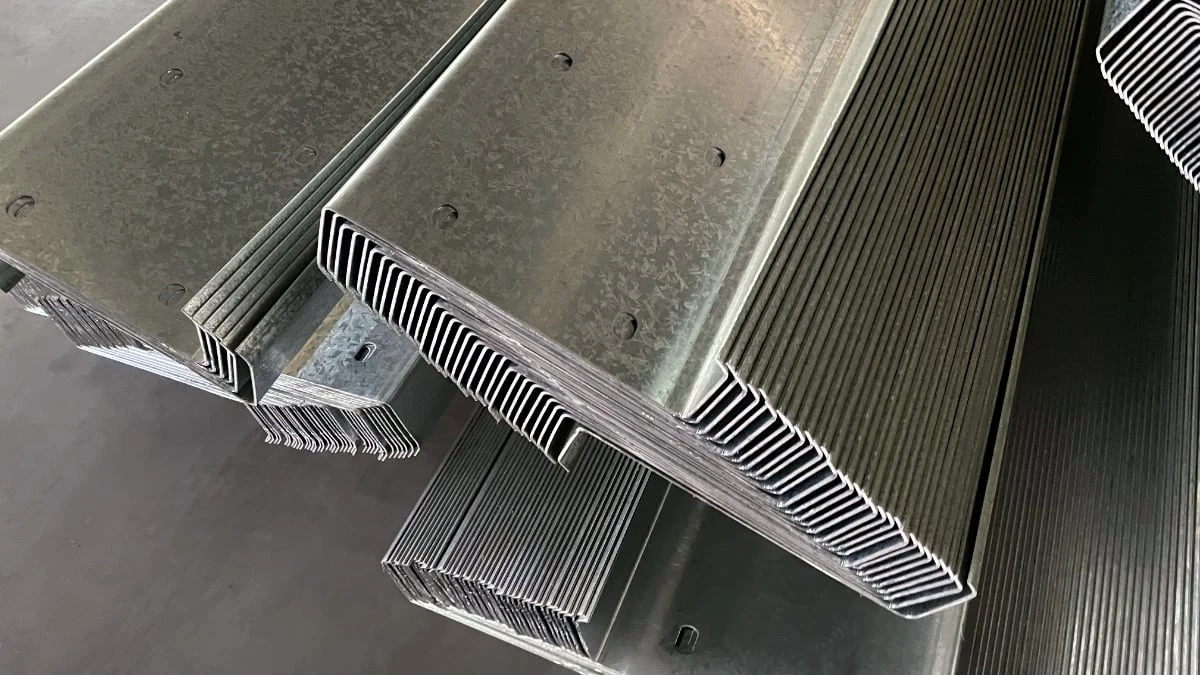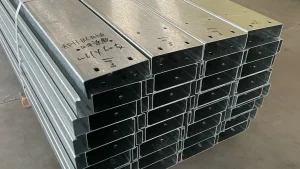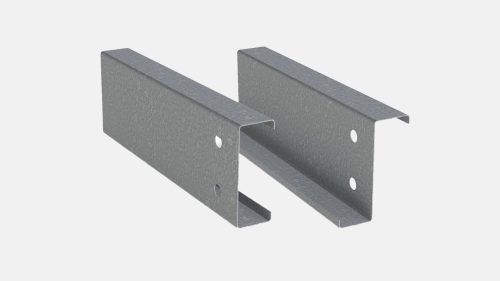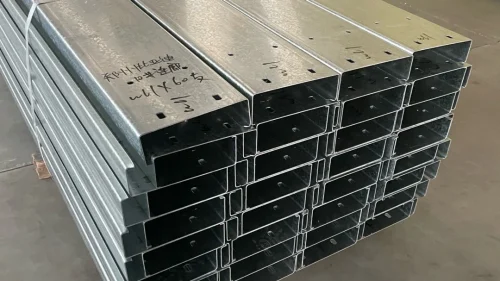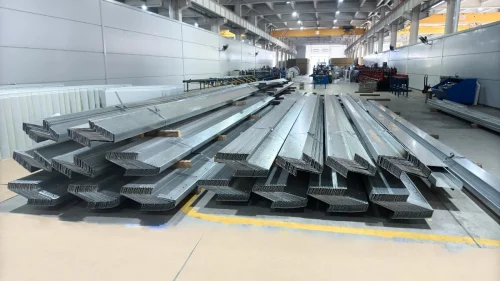Cold-rolled Z Purlin
A cold-rolled Z purlin is a secondary structural member used in steel building systems to support roof or wall cladding. It has a “Z” shaped cross-section, which allows it to overlap with adjacent members for continuous spans, increasing structural strength and reducing deflection.
These purlins are manufactured by cold-forming galvanized steel coils into the Z-profile at ambient temperature, which increases tensile strength without additional heat treatment. They are lightweight, cost-effective, and highly versatile in steel construction.
Key Features
-
Profile shape: The “Z” shape enables easy overlapping at joints, especially useful for continuous span roofing.
-
Lightweight: Reduces the load on the primary frame compared to hot-rolled sections.
-
Precision manufacturing: Cold-roll forming produces accurate dimensions and consistent quality.
-
Corrosion protection: Typically supplied with hot-dip galvanized coating (e.g., Z275: 275 g/m² zinc).
Common Specifications
-
Material:
-
Galvanized steel coil (ASTM A653, Q235, Q355, S350GD, etc.)
-
Yield strength: 250–550 MPa depending on grade.
-
-
Dimensions:
-
Depth (web height): 100–300 mm
-
Flange width: 40–80 mm
-
Lip size: 15–25 mm
-
Thickness: 1.5–3.0 mm
-
-
Length:
-
Custom cut to project requirements, often up to 12 meters in a single piece.
-
-
Coating:
-
Zinc coating: Z180, Z275, or higher for coastal or corrosive environments.
-
Optional pre-painted finish for aesthetic or added protection.
-
Advantages
-
Structural Efficiency: The Z profile’s ability to overlap provides greater continuity and load-bearing capacity compared to C purlins.
-
Cost-effectiveness: Lower steel weight per span reduces overall project cost.
-
Quick Installation: Can be pre-punched for bolted connections, reducing site labor.
-
Durability: Galvanized coating ensures long service life with minimal maintenance.
-
Versatility: Suitable for roofs, walls, mezzanines, and floor joists.
Applications
-
Roof purlins: Supporting metal roof panels or standing seam systems.
-
Wall girts: Carrying cladding such as sandwich panels or corrugated sheets.
-
Floor joists: In light steel floor systems.
-
Framing for sheds, warehouses, and industrial buildings.
Installation Notes
-
Overlap method: Z purlins are lapped (overlapped) at internal supports to create a continuous span, improving strength and reducing bending moments.
-
Spacing: Depends on roof/wall loads and panel type, typically 1.0–1.8 m center-to-center.
-
Connections: Usually bolted to cleats welded to the primary frame, with pre-punched holes for accuracy.
-
Bracing: May require lateral bracing or sag rods to prevent buckling.
Z Purlin vs. C Purlin
|
Feature |
Z Purlin |
C Purlin |
|---|---|---|
|
Overlap |
Yes, allows continuous spans |
No, generally used as single spans |
|
Strength |
Higher in continuous span applications |
Lower for same section size |
|
Cost Efficiency |
More steel-efficient in long spans |
Slightly higher weight for same load |
|
Usage |
Roofs, walls (especially long spans) |
Walls, short span roofs |
Z Purlin

C Purlin
Features And Benefits
OHC Steel Structure supplies cold-formed purlins and girts. The decision on which structural members to use will be based on the economy of each member, the roof and wall systems used, the product application, or by customer choice at the time of order entry.


